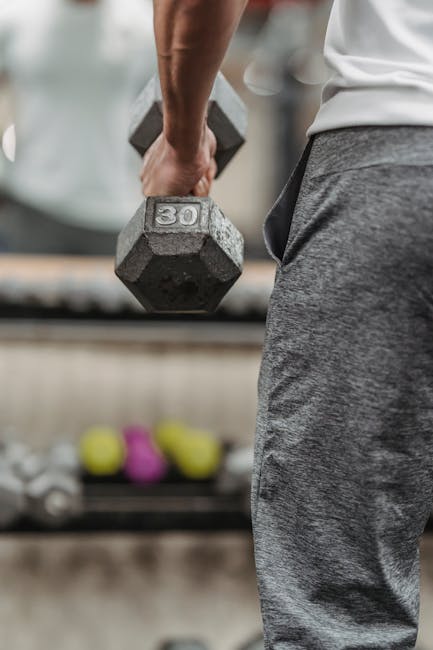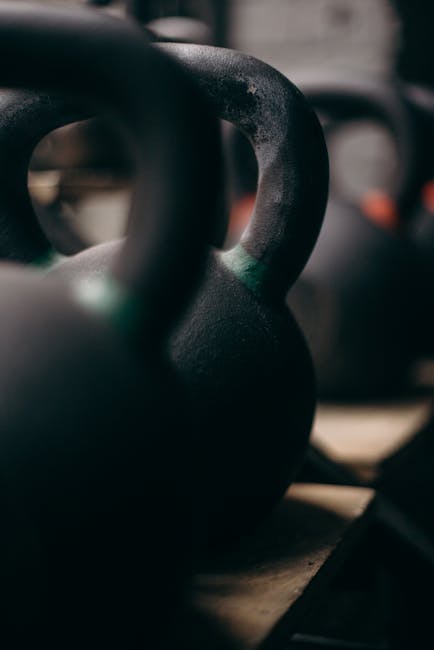Looking to pump some iron after your hernia operation? Well, why not? After all, aren’t weights exactly what the doctor prescribed? Just kidding. Please don’t get your medical advice from us. But if you’re looking for some weight lifting guidelines to keep that hernia in check, you’ve come to the right place. We’ll show you how to get your swole on and still keep everything where it’s supposed to be. So, grab your lifting belt and let’s get started on this humorous journey to hernia recovery.
Contents
Weight Lifting Guidelines for Hernia Patients
So you’ve got a hernia? No problem! You can still lift weights, but make sure you follow these guidelines:
- Avoid heavy lifting in the beginning. Your hernia needs time to heal before you put any strain on it. Start with lighter weights and gradually work your way up.
- Avoid lifts that put pressure on your abdomen. This includes exercises like squats, deadlifts, and overhead presses. Stick to exercises that focus on your upper body, like bicep curls and bench presses.
- Wear a supportive brace. This will help prevent your hernia from getting worse and provide support for your abdominal muscles.
Remember, lifting weights with a hernia requires patience and caution. Don’t push yourself too hard or you could end up making things worse. But with a little bit of effort and a lot of determination, you can still achieve your fitness goals!

Understanding Hernias and Its Causes
Have you ever had a bulge in your abdomen that just won’t quit? It could be a hernia! Don’t worry, you’re not alone. Hernias are common, and there’s no shame in having one. But what really causes them? Let’s delve into the world of hernias and find out.
First, let’s talk about the abdominal wall. It’s like a fortress made of muscles and tissues that protect your organs from harm. But sometimes, that wall can weaken and develop a hole or tear. That’s when things get “herniated.” This can happen for a variety of reasons, like lifting heavy objects or even just coughing too hard. So be careful next time you’re about to sneeze!
Another cause of hernias is genetics. Yup, you can blame your parents for this one. If they had weak abdominal walls, there’s a chance you might too. So the next time you’re feeling ashamed of your hernia, just remember that it’s all thanks to your family tree. And if you’re feeling particularly cheeky, you can always tell people that your hernia is a family heirloom that you’re quite fond of.
In summary, hernias happen when your abdominal wall decides to take a vacation. It could happen from lifting heavy objects, coughing too hard, or even just genetics. So next time someone asks you about your hernia, don’t be shy. Flaunt it like the genetic souvenir it is! And if all else fails, just blame it on that darn sneeze.
Factors to Consider When Lifting Weights Post-Hernia
So you’ve just recovered from a hernia surgery and you’re eager to get back into lifting weights. But before you start grunting and groaning, you need to take a few things into consideration. Here are some factors to keep in mind:
- Start Slow: Your body has just been through a traumatic experience, so ease your way back into lifting weights. Remember, Rome wasn’t built in a day.
- Avoid Heavy Lifting: While it may be tempting to prove your strength, it’s important to avoid heavy lifting at first. Stick with lighter weights and gradually increase the intensity.
- Proper Form: You’ve heard it a hundred times before, but proper form is key. This is especially important when lifting weights post-hernia. Improper form can result in a recurring hernia or a host of other injuries.
While it may be frustrating to take it slow and steady, consider it an opportunity to perfect your form and focus on overall wellness. Use this time to work on your flexibility and posture with activities like yoga or Pilates. Remember, lifting weights is not a race, it’s a marathon.
It’s also important to listen to your body and take a break if you feel any discomfort or pain. Don’t be a hero, and don’t let your ego get in the way of your recovery. Trust us, nothing is worth the agony of a recurring hernia.
Now grab your weights, channel your inner Rocky Balboa and get pumping (but don’t forget to keep these factors in mind).
Types of Hernia Suitable for Weight Lifting
If you’re dreaming of achieving those Arnold Schwarzenegger-like bulging muscles, but you’re worried about harming your belly button, fret not. Not all hernias are created equal. Here are the hernias that are suitable for weightlifting:
1. Inguinal Hernia
This is the most common type of hernia and also the most weightlifter-friendly. It occurs when the intestines push through a weak spot or tear in the lower abdominal wall, usually in the groin region. It’s more prevalent in men, but women can also develop it. As long as you get the green light from your doctor, you can pump those biceps without worry.
2. Umbilical Hernia
This is the type of hernia that makes expectant mothers cringe, but it’s not as scary as it sounds. It’s basically a hole in the belly button through which the intestines can peek through. It’s more common in babies, but adults can also develop it, especially if you’re overweight or have had multiple pregnancies. Weightlifting can actually help strengthen the muscles around the belly button, making it less likely for the hernia to pop out.
3. Incisional Hernia
This one is a little tricky. It occurs when the intestine bulges through the scar tissue from a previous abdominal surgery. It’s not the ideal type of hernia for weight lifting, but as long as the scar tissue is fully healed and strong enough, you can lift some weights with caution. It’s important to listen to your body and avoid overexerting yourself. And if you notice the hernia getting bigger or becoming painful, stop lifting and see a doctor immediately.
So there you have it. Hernias don’t have to be a weight-lifting death sentence. With the right precautions and advice from your doctor, you can still get swole without worrying about your intestines popping out of your belly like a spring-loaded toy. Just remember to lift with care and always put your health first.
Resistance Training Dos and Don’ts for Hernia Patients
Resistance Training Tips for Hernia Patients
So, you may have landed on this article because you have a hernia but you still want to stay fit and maybe even buff. Well, fear not my friend, for I have some resistance training dos and don’ts for you to follow.
Do:
- Start slow and steady. Rome wasn’t built in a day, and neither was your six-pack. Take it easy and let your body adjust to the routine.
- Focus on low-impact exercises. Opt for weight machines—especially those that provide back support instead of free weights. Try cable machines for resistance without the risk of injury.
- Listen to your body. If you feel pain or discomfort during a certain exercise, stop immediately. Ignoring pain will only lead to worse outcomes, and no amount of biceps could make up for that.
Don’t:
- Engage in high-risk activities like crossfit or powerlifting. Too intense, too soon.
- Perform exercises that target your core too intensely. Hernias often happen because of weakness in that area, so doing crunches or planks could worsen the situation.
- Overtrain or push past your limits. It won’t get you gains any faster, and your hernia may be the one to suffer for it.
So there you have it, folks—some simple dos and don’ts for resistance training while dealing with a hernia. Take care of yourself, and remember that fitness is a journey, not a race.
Bye Bye Hernia, Hello Muscle!
We hope that our weight lifting guidelines for hernia patients have been informative and useful. Remember, just because you’ve had a hernia doesn’t mean you can’t kick some serious butt in the gym. But, let’s be real, if you’re at the gym and not posting about it on social media, did you really go? Regardless, always consult with your doctor before starting any exercise regimen, especially after a hernia surgery. Happy lifting and may your muscles be stronger than your hernia ever was! #YouGotThis #NoMoreBulge #FitnessGoals








Leave A Comment